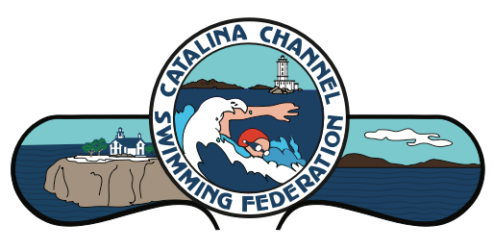BASIC SWIM INFORMATION:
Steps Toward A Catalina Channel Attempt
Swimmers considering a crossing must take several steps with the Catalina Channel Swimming Federation before jumping in the water. It is important that you take an honest account of your abilities, the support crew you can recruit, and the time commitment a Channel swim requires. Once you believe you are prepared to make an attempt:
Your First Steps
Contact a boat pilot
Secure your swim date and contract with the pilot.
The CCSF works closely with the recommended boat pilots, but they are independent of the CCSF and determine their own schedule and charges.
Confirm with your boat pilot the date you are to meet at the docks. Catalina attempts typically start the evening of one date, and are completed the next day.
Questions concerning the channel swim should be directed toward the CCSF info@SwimCatalina.org
Questions concerning your escort boat should be directed toward the captain.
Become familiar with what the CCSF requires of swimmers: Please read the Swim Rules and note the application deadlines.
Starting In January:
Visit your doctor and complete the medical form in the swim application – We suggest you schedule an appointment as early as you can, but in the year of your attempt. Our health can rapidly change; last year’s physical is unacceptable.
Complete the CCSF Swim Application.
Sign the waivers – An incomplete application will not be considered nor accepted. There is a checklist included with the application to help swimmers confirm they have a complete package.
Address questions concerning your application process to info@swimcatalina.org
Deliver your application, medical form, and fees to the CCSF at the same time.
Make a copy of your application for your personal records.
The CCSF offers a discounted sanction fee for complete applications received on or before May 1. An incomplete application will not be accepted.
Application must arrive – at a minimum – 45 days in advance of your attempt.
The CCSF will contact you and confirm the receipt of your application.
During The Year Of Your Attempt
Train for a cold open water 20-mile Channel crossing, which is influenced by unpredictable currents, strong wind, large Pacific swells, and is made more challenging with a midnight start.
Consider bilateral breathing. Swimming adjacent to a boat and a kayak at night requires that the swimmer has full awareness on both their left and right.
Recruit a support team that will be supportive. There is an age restriction for children on an escort vessel. Also, members who are susceptible to seasickness must take precautions or consider supporting you on land.
One support member should be named Crew Chief and take the lead role of coordinating the support team and fully understand the swimmer’s feeding protocols. This is often the coach, but must always be an individual who is not susceptible to seasickness or has reliable precautions against it.
It is a safety requirement that at least one member of the support crew be able to communicate with the swimmer in their own language, and in the English language with the captain and crew of the escort boat. The CCSF cannot provide interpreters.
It is the swimmer’s responsibility to recruit kayak or paddle support. Paddlers are recommended. Most swimmers feel more comfortable with a kayak adjacent to them while swimming in the darkness. The CCSF can assist in connecting you with paddle support.
Make travel plans for you and your support team. We recommend a couple of days advance arrival to adjust to a time zone change. In particular, international swimmers may want more time to adjust.
Near The Date Of Your Attempt
Review the CCSF General Rules (see “Swim Rules” in the FORMS section above)
The CCSF will assign two official observers for your attempt. An introduction will be made a few weeks in advance.
The CCSF Observers conduct a safety meeting on board the boat. The captains will also require a pre-swim briefing of vessel rules and instructions.
Swimmers are required to arrive at the boat with at least 20 glow sticks.
Paddlers provide a thick safety line and attach it to the bow of the Kayak. Your observer and boat captain can answer questions or assist in tying the line.
Swimmers are required to bring a copy of their “Plan Your Swim / Swim Your Plan” form which is a portion of the CCSF application.
Swimmers are strongly encouraged to have the lead support member carry on board a copy of their medical form, insurance cards, and ID cards, as well as emergency contacts of family on shore.
FORMS

